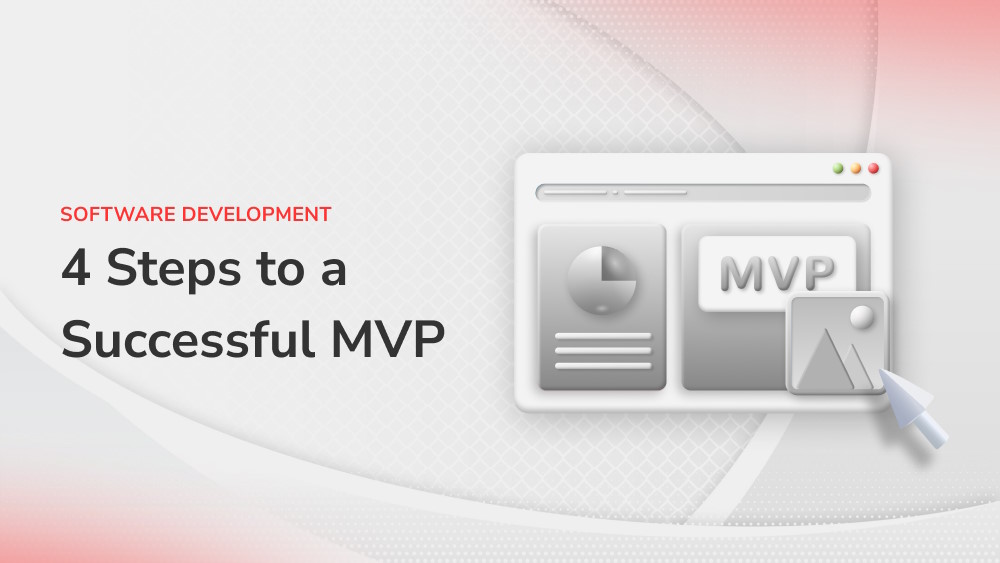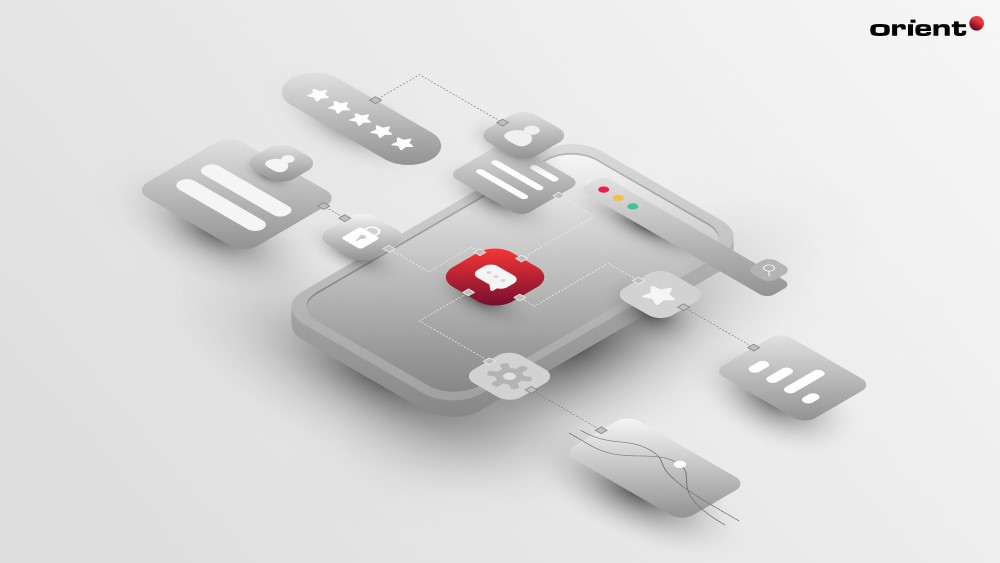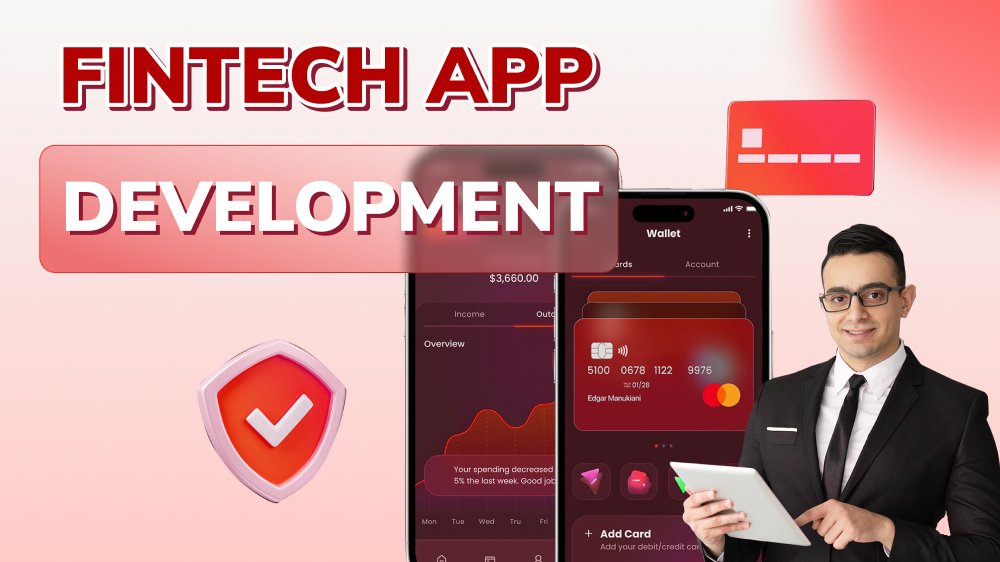How to Build Minimum Viable Product (MVP) with Only 4 Steps

Content Map
More chaptersHave you ever heard about the term “minimum viable product (MVP)”? An MVP is a basic product version that includes only the crucial features needed to solve the core problem of the target audience. Building an MVP can help you validate your product idea, test the market, and gather user feedback before investing in full-scale product development.
When building the minimum viable product properly, businesses, regardless of size, receive unexpected results. You may not believe in the effectiveness of building MVP development at first glance. However, it is no coincidence that many large companies have taken such a way and are successful in their field.
Uber is one of the typical minimum viable product examples. Instead of developing a complete mobile app development to realize the idea of pair drivers willing to take passengers at an affordable price, Uber takes it small by creating an MVP called UberCab in the San Francisco market. Not very long, UberCab helped Uber become one of the most valued companies in this country.
But how to build a minimum viable in the simplest way while still maintaining the best performance? In this article, we will walk you through the process of building an MVP from start to finish. Whether you are an entrepreneur or a product manager, this guide will provide you with the needed knowledge and tools to make a successful MVP and take your product to the next level. So, if you’re ready to turn your product idea into a reality, let’s get started on building your MVP!
What is an MVP (Minimum Viable Product)?

An MVP, or what we call a Minimum Viable Product, is a product development strategy in which a basic version of a product is released to the market as quickly as possible, with only the essential features included. The goal of an MVP is to better customer development and gather qualitative feedback and quantitative feedback from early adopters and real users, which can then be used to improve and refine the product in later versions.
The concept of an MVP was popularized by entrepreneur and author Eric Ries in his book, “The Lean Startup.” In this book, Ries emphasizes the importance of building products that are validated by real-world feedback rather than relying on assumptions and guesswork.
By releasing a minimum viable product (MVP), product teams can test their assumptions and hypotheses about target users’ needs and preferences without investing significant time and resources in a fully-featured product. This approach allows companies to quickly iterate, and pivot based on user feedback, leading to better products that are more in line with customer needs.
There are many types of minimum viable products, and the four most common types include concierge MVP, oz MVP (wizard of oz MVP), content MVP and software prototype.
Distinguish Qualitative Feedback from Quantitative Feedback in Minimum Viable Product Software
As mentioned in the definition, the ultimate goal of minimum viable products is still to collect qualitative feedback and quantitative feedback. However, many product teams may experience confusion around the distinction between these two.
Qualitative feedback in a software MVP typically involves gathering opinions, beliefs, and attitudes from target users through techniques such as surveys, user interviews, or focus groups. This type of feedback can be useful for understanding how users feel about the product and business idea, what they like or dislike, and what improvements they would like to see.
Quantitative feedback, on the other hand, involves measuring specific metrics such as usage data, conversion rates, or customer retention rates. This type of feedback can provide more objective insights into how well the product is performing and can be used to track progress over time.
Both of these types of feedback can be valuable to a business for improving an MVP. However, qualitative and quantitative feedback is not done in isolation but needs to work in parallel to meet user satisfaction and achieve business goals.
MVP Development: Benefits for Business

Why launch your product from the very beginning with only a few core features when you can wait a little longer to offer the target audience a full-fledged product? Why are startup founders and owners of large businesses so fond of using MVP product development? There must be reasons.
Validate Your Product Idea
The software development process is long and difficult, starting from ideation to bringing the product to market. When businesses develop a new product idea, they often have many assumptions about the target audience, needs, and how people will respond to the product. However, these assumptions are not accurate. You can never know if your banking app will meet the needs of the target market or not without trying to put it to the test. That is why businesses develop a minimum viable product (MVP).
In case the product receives positive feedback, you continue to release more upgraded versions with all the features. In case of receiving dissatisfaction from early adopters, you can completely take your time and modify it based on the feedback.
Place a Low-Risk Experiment
Imagine you bring a product to market without developing an MVP app. If the product is not successful, the significant time and money poured into the product will be a heavy loss for the business, not only bringing no profit but also wasting resources.
In contrast, placing low-risk experiments through minimum viable products is a smart way for businesses to test the viability of their product idea without committing any significant resources. By launching an MVP development product with only the basic features, businesses can test the waters and gauge user flow and engagement without investing too much effort into building a fully-featured future product that may not succeed in the market.
Also, maybe you don’t think about it. However, MVP product development also helps businesses in the testing stage of the product, thanks to customer feedback and reviews. The company’s development team probably won’t be as large as the number of potential customers experiencing the product. It is they who will be the most effective testers when they have the ability to find flaws in the product that oftentimes insiders do not even notice.
Attract Third-party Investment
The technology market is competitive. To attract users and investors, businesses are forced to constantly update new technology trends and develop quality products. Investors are often risk-averse and want to see evidence that a product or business has potential before investing their money. Between a theoretical idea and an intangible product, it is obvious that investors will choose an intangible one even though it is only a minimum viable product with crucial features.
By launching a minimum viable product (MVP), businesses can demonstrate that they have a product that has been validated by real-world feedback and increase their chances of securing funding from investors. At this point, the MVP development cost in the early stages is totally worth it.
MVP Development Process: 4 Steps to a Successful MVP

Because the minimum viable product is generally a software product with essential features, the MVP development process is more or less the same in general. To attract early adopters and achieve expected results, you need to break down such a process into small steps when build a minimum viable. Below are detailed instructions for you on how to build a minimum viable product with only four steps.
Step 1: Market Research - Target Audience Research & Competitor Research
You’ve probably seen market research pop up in every guide regardless of the content since it’s really important to shape your business and your product in the future. To start a really effective market research overview, you need to consider two main factors of the market, including potential customers and competitors.
The target users will be the group of customers who use your product, not anyone else. The more detailed the research on potential customers, the higher the probability of building an MVP development product that fits their satisfaction. Demographic, geographic, behavioral, needs-based, etc., are the segments you need to focus on. You can use survey methods such as surveys, interviews, website analytics, feedback forms, and industry reports to collect data, gain valuable insights and serve the software development process later.
To have a strong foothold in the hearts of users, make sure that your product is different from the products in the same segment of the competition. Businesses can undertake a variety of activities to discover the strengths and weaknesses of the competitors. Here are some actions you can take: analyzing competitors’ websites, reading customer reviews, following competitors’ social media, attending industry events, and conducting a SWOT analysis.
Step 2: Identify Your Special Value Proposition
Let’s start your second step of the MVP process by defining the problem that you want your minimum viable product to solve. Every product has its own function and gives the target audience a certain value of use. Among the thousands of software products that apply testing with the MVP app, the thing to increase competitiveness in addition to product quality is your value proposition. Customers only look for products that really solve their pain points. Therefore, it is important for businesses to understand their target audience’s unique needs and preferences and what makes your minimum viable product different.
A banking app with vital features can obviously solve most of the basic human, financial needs, such as withdrawals and deposits. However, the banking app that stands out among such a market is an application that has all the most advanced secure login options available today. Then, secure login options are considered your business’s special value proposition.
A few questions to assist you in this second step in building a minimum viable product.
- What are your users’ specific needs and preferences?
- What is the core problem that your MVP solves for customers?
- How does your MVP solve this problem in a unique and valuable way?
- What features and functionalities does our MVP offer that address the core problem?
Step 3: Define the MVP Development Scope
MVP development scope means that the vital features that you decide will appear in the first version of the product. Market research and value proposition somewhat make it easier to identify such features. However, that is not all, as nowadays you have more than one method to assist you in this process. Common methods include:
- User stories: A tool used in Agile software development to describe functionality from the perspective of the end-user.
- Prioritization matrix: A tool used to compare different features or ideas against each other based on two or more criteria.
- Feature brainstorming: A method used in product development to generate a list of potential features and functionalities for a product.
Remember, the goal of the MVP is to create a product that solves the core problem while keeping the core feature set as simple and streamlined as possible. So, try to stick to this minimum feature set and resist the temptation to add additional features that are not essential to solving the core problem.
In addition to user-related factors, the technical feasibility of the features you plan to include in your MVP is also important. Software development cost, development time, and development team, alongside user feedback and competitor analysis, are internal factors that need your attention in the initial stages.
Step 4: Test, Develop and Launch Your MVP
The preparatory steps are all for the purpose of launching your MVP. It’s time to start the process of realizing your business idea of an MVP. This process usually has three small steps, including the prototype phase, MVP testing, MVP launching, and result analysis.
- Prototype phase: In this step, you will create a basic version of your product that includes only the minimum features needed to solve the core problem. This prototype will be tested with a small group of early adopters to gather feedback on how the product works and what improvements can be made.
- MVP testing: Once you have a prototype, make sure you then test your MVP with a larger group of users. This testing can take several forms, including alpha and beta testing, user testing, A/B testing, surveys, and analytics.
- MVP launching and result analysis: It’s time to take your official MVP out to the public. Don’t forget to use analytics tools to track key metrics such as user engagement, retention rates, revenue, etc., and evaluate the customer’s response to the product. This process may require iterative development and updating of new features for the future product, since technology trends are always changing, and so are human needs.
Wrapping Up

The MVP development process is quite simple and does not take as much time and investment as a completed functional product when it only includes prioritize features with the least effort. However, do not take this process lightly when it is the first impression for customers. Starting from small things, elaborating on each stage of development will help you win over the market.
Don’t be afraid to modify or even change the features or interface on minimum viable products based on real-world feedback since that is the reason why you start this whole process. In case this product development is too much for your business, let Orient Software give you a hand!







